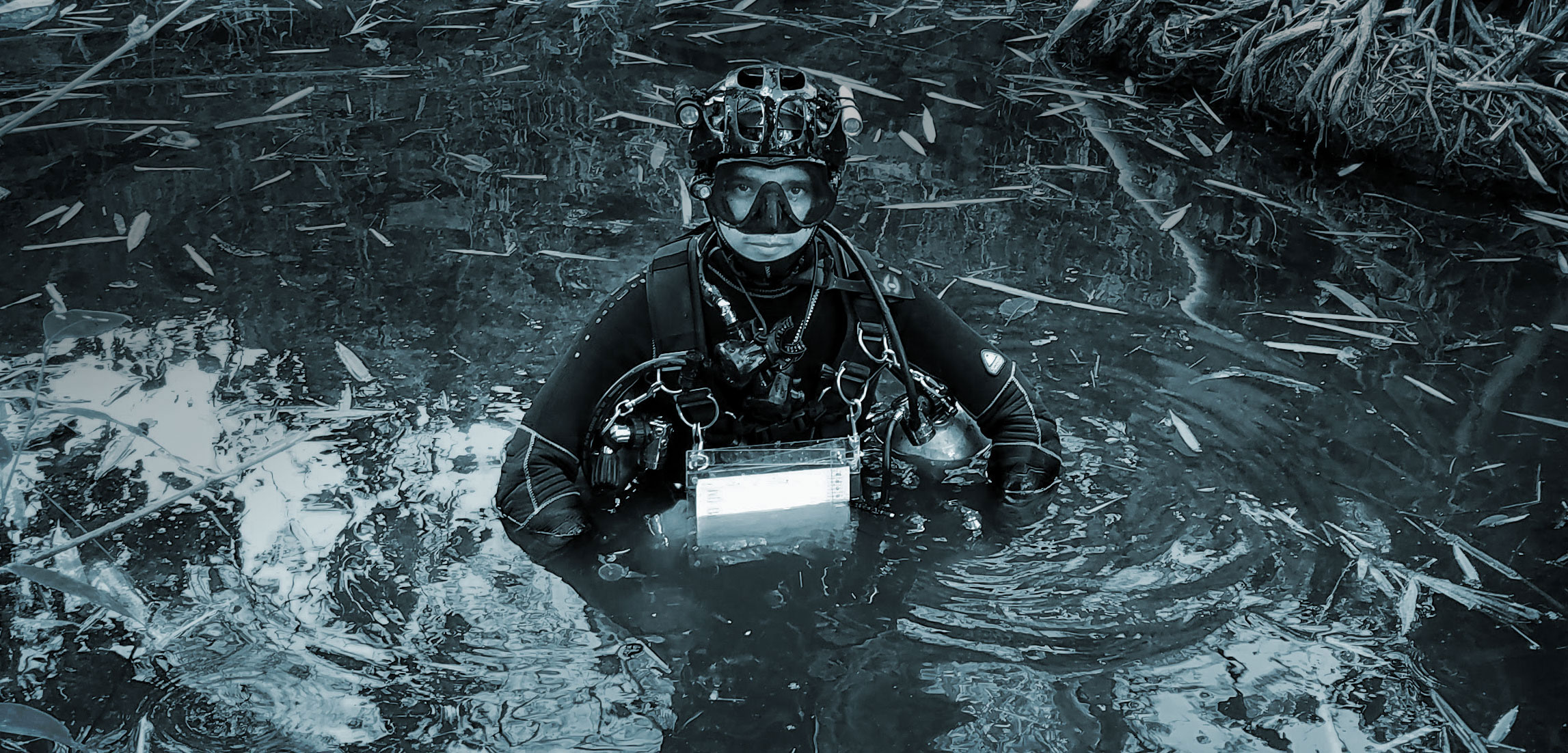Coastal Job: Underwater Cave Ecologist
Fernando Calderón-Gutiérrez explores life that thrives in deep, dark underwater caves around the world.
Article body copy
Some people work in cubicles, others work in kitchens, but the most intriguing workplace of all may be the coast. Meet the people who head to the ocean instead of the office in our Coastal Jobs series.
Fernando Calderón-Gutiérrez is a Mexican underwater cave ecologist who dives in the coastal caves of Mexico, Belize, and the United States to document organisms and learn how they interact with their hostile environment.
Most aspiring marine biologists are drawn to charismatic animals like sea turtles and whales. For me, the pale, blind creatures of the world’s darkest caverns are more alluring. For a long time, scientists wondered how life in underwater caves was possible because there’s no sunlight. But in 1996, they discovered bacteria that produce energy through chemosynthesis, a process where bacteria break electrons from atoms to make food. I knew from a young age that I wanted to be part of the quest to find other creatures that live in these habitats. So when I studied marine biology, I also trained in diving.
As an underwater cave ecologist, I find and name new species. I have described eight new species of sponges so far, seven of which live only in these caves. Sometimes I count the abundance of organisms to see how their numbers change over time. I also study how different species interact with one another and their environment.
I mostly dive in caves about 100 kilometers or less from the coast, where groundwater flows into the sea. The entrances to these caves are mostly inland—sometimes in the middle of a jungle—and we must hike for about an hour carrying our bulky diving gear. The entrances can be everything from a large pool to an opening so small that my shoulders touch the walls.
When we start diving, there’s natural light around us, but as we dive farther, it turns dark, and we switch on our lights and follow the cave line—a thin thread explorers leave behind for divers to find their way in and out of the cave. While some caves are just a few meters long, some stretch over 300 kilometers and could be deeper than 50 meters. Diving at this depth is risky—the nitrogen in my tank becomes narcotic—so I take cylinders that also contain helium to prevent narcosis, a state where the brain feels like it’s on a high, akin to being drunk. I always plan for safety because if we run into trouble, we might be an hour or so away from the cave entrance. I dive with a buddy who keeps track of safety while I am engrossed in my science.
But the mysterious world we see inside is worth the risk. Most underwater caves have only crustaceans and fish, with many species found nowhere else in the world. Some may also have sea urchins, sea stars, sponges, worms, and mollusks. The deeper sections of some caves have more life forms because of the food-producing chemical processes happening there. My favorite cave to dive is El Aerolito on Cozumel [in Mexico] because it is full of life—I recorded 101 species there.
My most exciting encounter to date has been with remipedes—venomous wormlike crustaceans found only in underwater caves. It took me around 200 dives before I came face to face with about 15 of them hidden deep in the caves of Cozumel. Remipedes share a common ancestor with present-day crustaceans and insects. Scientists are studying remipedes and other cave-dwelling organisms to better understand evolution and also how these organisms have adapted to the extreme environments in these underwater caves.
These fragile ecosystems are rapidly changing due to water contamination, climate change, and construction activities. As a biologist, I’m worried we might lose the many intriguing life forms in these deep, dark worlds before we can even begin to understand them. But I’m determined to explore all I can while they last. I’m taking advanced diving lessons so that I can go even deeper into these caves and learning newer laboratory techniques so that I can go even deeper into understanding this environment.

